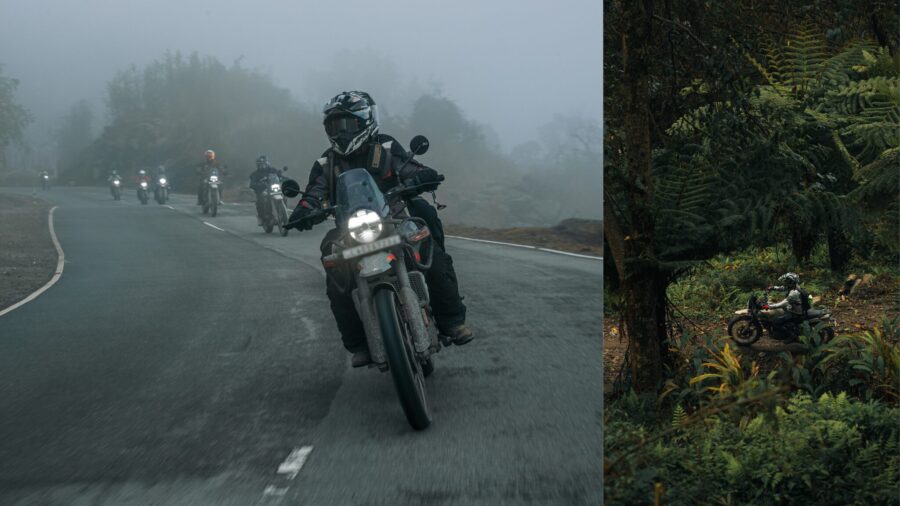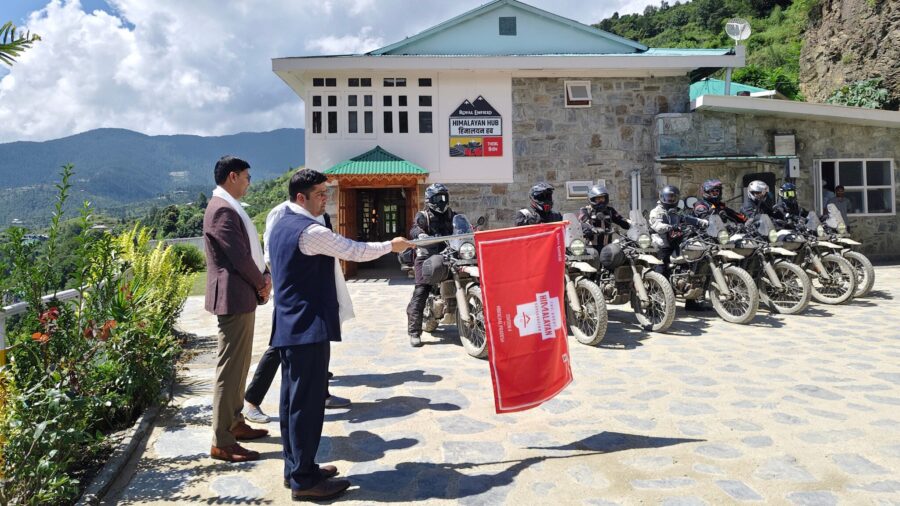At a Glance
- Cultural Ride, Not Just Adventure – Twenty rider-researchers set out across Himachal Pradesh from August 27 to October 9, 2025.
- Traditions in Focus – From the community feast of Himachali Dham to the grand Kullu Dussehra, twelve living practices will be explored.
- UNESCO’s Mission – The journey highlights Intangible Cultural Heritage (ICH), living traditions passed down through communities.
- Stories for the World – A four-part National Geographic docuseries on JioHotstar will bring Himachal’s heritage to global audiences.
Introduction
The Himalayas aren’t just about snow peaks and valleys — they hold stories, rituals, and crafts that have shaped generations. To celebrate and preserve these traditions, UNESCO and Royal Enfield have reunited for the fourth edition of The Great Himalayan Exploration.
Flagged off on 27 August 2025 from Theog, Shimla, by Shri Shashank Gupta (SDM, Theog) and Shri Sidharth Sharma (DSP, Theog), the expedition brings together 20 rider-researchers. Over the next weeks, until October 9, they’ll journey through Himachal Pradesh, living with local communities and documenting practices passed down for centuries.
This isn’t just a ride — it’s cultural exploration. And soon, the world will see it too, through a National Geographic docuseries on JioHotstar, capturing not only the grandeur of the mountains but the living heritage that makes them timeless.

Riding with a Purpose
This isn’t about speed or thrill. Each rider is on a mission — to understand Himachal from within. Split into four groups, they’ll ride through different routes, pausing to share meals, talk to artisans, and witness rituals. Their bikes may take them across mountains, but the real journey is into the heart of culture.
Himachal’s Living Heritage
The expedition focuses on 12 traditions, each one offering a glimpse into Himachal’s cultural identity. A few highlights:
- Himachali Dham – A festive vegetarian feast cooked by hereditary Botis, served on leaf plates in a sacred sequence. For locals, it is as much worship as it is food.
- Chamba Thaal – Ornate brass platters, handcrafted for religious ceremonies, representing centuries of skill.
- Kangra Paintings – Miniature art known for fine lines and natural colors, capturing stories of devotion and love.
- Kath-Kuni Architecture – Ingenious wooden and stone houses, earthquake-resistant and eco-friendly.
- Spiti Jewellery – Silver and turquoise ornaments, carrying Tibetan influences and protective symbolism.
- Himachali Topi – The iconic woolen cap, worn with pride across the state.
- Kullu Dussehra – A spectacular week-long gathering where more than 300 village deities come together in music, dance, and celebration.
These practices are not just history — they are alive, shaping everyday life in the mountains.
Why It Matters
UNESCO calls such practices Intangible Cultural Heritage — traditions that cannot be stored in museums but survive only when people keep living them. Today, many are at risk as younger generations move to cities. By documenting them, this expedition gives recognition to local communities, strengthens cultural pride, and shares Himachal’s voice with the world.
Conclusion
The Great Himalayan Exploration 2025 is proof that a motorcycle can carry more than a rider — it can carry heritage, stories, and pride. When the National Geographic docuseries streams, viewers won’t just see Himachal’s mountains. They’ll taste its feasts, admire its art, and feel the spirit of its festivals.
This is more than an adventure. It is a promise that Himachal’s living traditions will continue to echo across valleys — and far beyond them.

